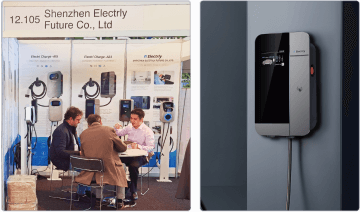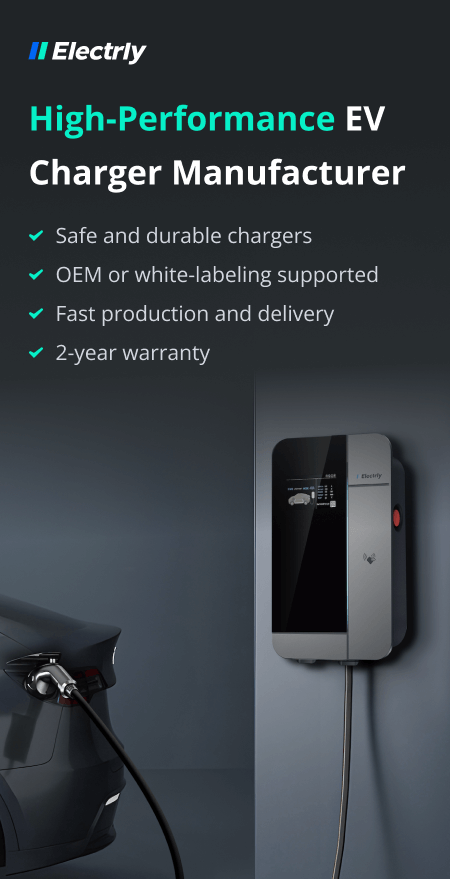For private or business users, a Level 2 charger is an excellent option. With a 240-volt output, it can add up to 40 miles of driving range per hour and is also affordable. Additionally, it is the most powerful type of EV charger that can be installed in homes, providing faster charging times than a basic Level 1 charger without being overly complicated to install.
If you are one of the EV users who are considering upgrading to Level 2 in your home, here is what you need to know.
Can I Install My Level 2 EV Charging Station at Home?
In most parts of the world, the standard household power grid provides 120-volt electricity. However, Level 2 chargers require at least 240-volt electricity, which means that if you have a 120-volt power source, you'll need an additional device to provide the charger with the necessary power for faster charging times. This requires the expertise of an experienced electrician to install.
However, in some areas, 240-volt power grids are available, making the installation of a Level 2 charger much simpler. In this case, all you need to do is plug the charging device into the socket and use a Level 2 cable to charge your EV.
Install Level 2 Charger at Home Step by Step
Level 2 chargers are a valuable addition for most EV owners. To ensure a safe and straightforward installation process, consider following these steps.
Check the Eligibility Of Your Home
Before contacting an electrician for a quote on installing a Level 2 charger, it's important to check the exact specifications of your power grid, including voltage and eligibility. In most cases, the power grid will not be an issue, but it's still recommended to verify. Some areas may have 240-volt electricity available, which is superior to the standard 120-volts.
Additionally, some areas may require a permit issued by the local council, so it's essential to apply for one before the installation process. While most home electric systems can accommodate a Level 2 charger, there are various standards to consider, so it's always helpful to double-check.
Choose the Charging Plan
Certain EV chargers come with a unique charging plan, where the cost of charging your EV is separate from your standard monthly electric bill. Other chargers plug directly into the primary power grid, and you pay the total to the electric company.
It's a good idea to research all available options and calculate the potential expenses related to the usage of your electric vehicle, including charging times, battery size, and mileage. Careful calculations can help you save considerably on future costs.
Purchase and Install Level 2 Charger
Once you have confirmed that everything is in order and you have the necessary permits, it's time to contact a company or electrician to schedule the installation of your Level 2 charger. Some companies offer the convenience of purchasing chargers directly through them.
When choosing a company, look for one with experience in installing similar devices that guarantees the quality of both the product and the work performed. Ask them to explain the installation process to you and address any questions you may have. It's also important to learn how to safely operate the system and recognize any potential issues.
Testing and Inspection
In certain areas, a technical inspection is required before using the installed Level 2 charger. If the installation company or professional did a proper job, there should be no issues passing the inspection and starting to use the charger immediately. The testing and inspection process is vital in identifying potential issues and ensuring that your Level 2 charger is safe for everyday use.
Rebate
In almost all areas, there is some kind of government grants, initiatives, and rebates for EV users who installed Level 2 charging in their homes. Since the installation process is relatively expensive, refunds are handy, so you should apply for them.
What Should I Consider Before Installing an EV Charger at Home?
Before installing a level 2 EV charger at home, there are several factors to consider. Firstly, it's essential to identify an appropriate location for the device, ideally in a garage or carport. Since Level 2 chargers require 240-volt electricity, it's critical that the device is not exposed to the elements or moisture. If your home or workplace cannot provide sufficient shelter, you may need to explore other options for charging.
Another important consideration is purchasing a charging cable that is long enough and of the correct type. Additionally, if multiple electric cars will be using the charging station, you'll need to factor in average charging times, battery sizes, and other variables to determine if one charger is sufficient or if you'll need to install multiple chargers.
Conclusion
Level 2 chargers are an excellent solution for your EV charging needs, providing substantial power and short charging times. They are ideal for homes, workplaces, and users who require fully charged batteries daily. However, to ensure the best experience, affordable energy costs, and ease of use, you'll need to follow a few essential steps and carefully consider the energy plan, installation process, and other critical aspects.


